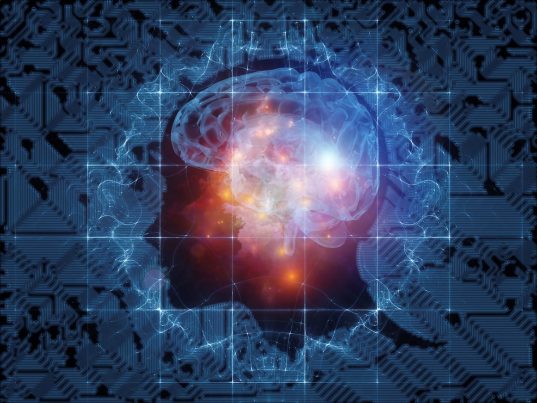
Research finds our brains don’t use as much energy as previously believed, when compared to other species
Wednesday, December 13, 2017 by Frances Bloomfield
http://www.realsciencenews.com/2017-12-13-research-finds-our-brains-dont-use-as-much-energy-as-previously-believed.html

Humans devote a large portion of our daily calorie intake to our brains, more so than other animals. After all, the human brain expends 25 percent of the baseline energy budget despite comprising no more than two percent of human body weight. This is an idea that has long been accepted in scientific circles. Yet researchers from Duke University have put out a study that challenges that notion. According to Doug M. Boyer, assistant professor of evolutionary anthropology, and his graduate student Arianna R. Harrington, human brainpower isn’t as extraordinary as originally thought.
To determine how humans and animals compare in terms of brain energy uptake, Boyer and Harrington first measured the bony canals that enclose cranial arteries. These blood vessels serve as the routes through which energy travels to the brain and delivers glucose, a sugar that helps the brain operate normally. The obtained measurements were coupled with brain glucose uptake valuations and internal skull volume estimates, which the researchers used in their examination of seven species, including humans, monkeys, rats, mice, and squirrels.
Following this, Boyer and Harrington utilized multiple regression to work out the brain glucose uptake for 15 animal species. This new group consisted of lemurs, treeshrews, Southeast Asian primate relatives, and other animals whose brain costs have yet to be identified.
They found that humans allotted more energy to the brain than other animals such as chimpanzees, orangutans, and rodents. Additionally, the human brain had a greater demand for calories than most of the animals included in the study: twice that of the chimpanzees brain, and three to five times that of the brains of rabbits, squirrels, and mice.
That wasn’t the case for all creatures, however. The pen-tailed treeshrew, for example, was found to have a brain cost similar to that humans. The common brown lemur, pygmy marmoset, and ring-tailed lemur, on the other hand, were discovered to have brain glucose utilization rates that exceeded that of humans, with the common brown lemur needing the most out of all the organisms used in the study.
“This shouldn’t come as too much of a surprise. The metabolic cost of a structure like the brain is mainly dependent on how big it is, and many animals have bigger brain-to-body mass ratios than human,” said Boyer, who then added: “We don’t have a uniquely expensive brain. This challenges a major dogma in human evolution studies.”
Speaking of their results, Harrington noted that they implicate high-demand brains as a feature that developed well before humans arrived on the scene. “The results suggest that the ability to grow a relatively more expensive brain evolved not at the dawn of humans, but millions of years before, when our primate ancestors and their close relatives split from the branch of the mammal family tree that includes rodents and rabbits,” she remarked.
More than that, Boyer and Harrington’s study has opened up a potential new method of calculating the amount of fuel needed by a brain. Prior studies were based largely on neuron counts instead of on bone measurements, which made it difficult to assess the brain energy demands when soft tissue was unavailable. Yet through this technique, scientists would be able to do just that with the animals of today and those that become nothing more than fossilized remains, human ancestors included.
“All you would need to take the measurements is an intact skull and some of the neck vertebrae,” explained Harrington.
For more studies and breakthroughs about the human brain, simply go to Brain.news today.
Sources include:
Tagged Under: Tags: Brain, brain power, brainpower, calorie intake, research





